Eagle Eye IX
Deep Sea Research & Anti Submarine
Eagle Eye IX Deep Sea Research & Antisubmarine Amphibious Aeroplane
Technokontrol has developed the EAGLE EYE IX version amphibious aircraft to reduce the cost of using expensive hi-tech aircraft and/or the use of sea vessels for "under water research programs or military operations".
The benefits of using this version is that from the very simple operations and using the aircraft to "sail as a vessel" after landing on the sea, river, lake, for "water operations " using any SONAR equipment from research, environmental or military desired usage will allow the operator to save many hours in travelling time "to and from" locations in slower normal vessels. This will also allow the operator to be able to have a wider operational use in the same operations programe being able to fly to extreme locations, do their daily programe and return to base as an aircraft thus saving many man hours, reducing transport-travel costs and being able to be much more versatile and being able to fly to locations daily depending on also weather conditions thus being able to adapt extremely easy form many different land or even floating sea bases.
A simple example is that an operator which has a large “floating ship/platform Base” in the middle of any ocean can be able to use a crane systems to unload the “THE EAGLE EYE IX” onto the sea surface fully refueled and use its extreme 1,500km flying range to do any type of operations from returning to land in case of sick-injured employees, to deliver repairs or even to be able to transport different types of research teams" to and from" the ship. Which can still be sailing towards a new location as happens with "processing fish factories" in the event of using it for industrial/commercial fishing activities but also you can have the same benefits for any kind of telecom ships, research ships, etc.
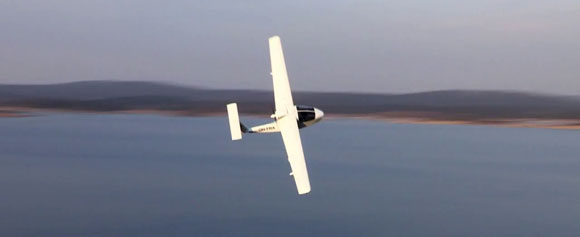
Eagle Eye X-Deep Sea Research & Anti Submarine
Once the EAGLE EYE IX has reached its" floating ship/platform base" with a simple "on deck crane" the EAGLE EYE IX can be loaded back on to the ships/platform deck or storage hold. Then transferred and stored into its own transport container in less than an hour and the same for re-use the following hours or days. Its aviation hanger-container carries its own anti-explosive/slosh refueling supply fuel tanks, maintenance spares, and secure all weather internal protections panels including anti-heat/fire panels.
The SONAR technology has been around for many years and each year the development of smaller and lighter SONAR units are being designed and developed and thus we are using these new-sophisticated technologies which are not only based on the most modern technologies but also adaptable to our aeronautical operational needs thus making the EAGLE EYE IX an extreme versatile amphibious aircraft thus being able to have a one seater version and being able to carry and to deploy SONAR equipment of up to 150 kg or to use simple SONAR technologies as the ones in the used in the "fishing industry" where the same aircraft can be deployed in a two seater version, hence, either the pilot or co-pilot can be using the SONAR equipment and the other pilot sailing/flying the EAGLE EYE IX at the same time thus extending "quality operational time on exact locations".
Just to indicate the simple differences between SONAR and SODAR we would like to explain very simply the differences of the technical terms and the many uses of this evolving technology which is where still many deep sea secrets still remain hidden but with today´s technology we can use for peace time activities as looking for "fish banks", "environmental deep sea studies", "anti water-pollution protection programs", "search & rescue", "historic and underwater treasure hunting" to the more defensive or aggressive uses of the amphibious aerial technology for military use as part of an anti-submarine hardware program to even attack mode in which depth charges, mines or even anti-submarine missiles/torpedoes could be launched from an aerial attack mode or even just in water-floating attack position.
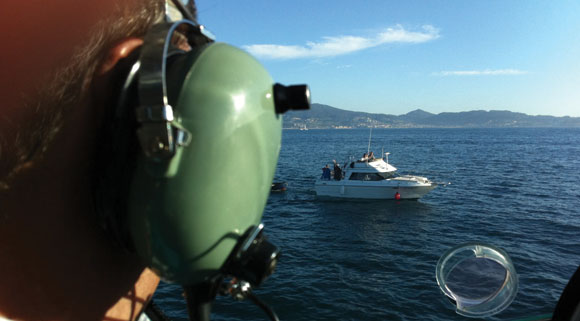
Due to the EAGLE EYE IX physical size, engine noise reduction systems and quick response and turn around times an EAGLE EYE SQUADRON air fleet using our EAGLE EYE IX for example will cost a fraction of modern day anti-submarine helicopters or aeroplanes but can be easily compensated by pure “numbers of operational units” as the cost, maintenance and training are extremely much lower even though they won´t have the ultimate sophisticated technological anti-submarine or military capacity of larger global military manufactures. However, for an emerging nation or an international global corporation wishing to protect their international assets in emerging nations with the lack of trained personnel, the lack of pilots or maintenance engineers or even at corporate/government level financial budgets restrictions this Aviation-Security program can be a great investment especially at this "aviation entry market technological security program" and as in all of our EAGLE EYE AVIATION options can be upgraded if or when required.
This is also a great operational platform to cover extreme un-protected locations especially at sea. A simple example being the South Atlantic sailing routes between South America-West Africa-Europe to control, patrol and even to have a "long range ship/platform maritime Law Enforcement & Navy platforms sea bases" for and in these extreme long distance-maritime ranges / locations where even our best “RADAR” operations don´t cover all of these sectors thus having the possibility to use these bases to fly” from and to” as a “logistical stepping stone between continents” thus closing these “massive open gaps of un-controlled/un-protected logistical /zones routes/sectors” and to be able to enforce anti-terrorism actions, DEA operations, anti-piracy, anti-terrorism/piracy attacks on offshore platforms, coast guards services, armed forces, search & rescue, fishing control, environmental policing without needing to have a land base in close range and even installing extra long range fuel tanks we can increase the EAGLE EYE IX VERSION range over 3,500 km range with one pilot.
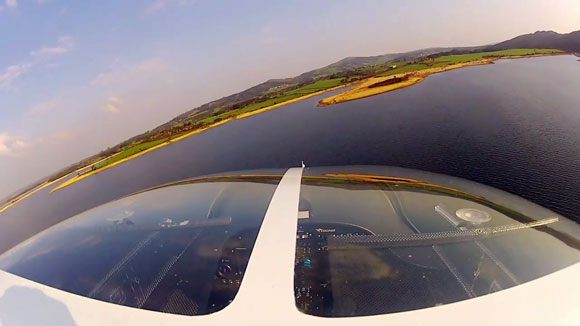
What is SONAR or SODAR Technology?
Sonar (Sound Navigation and Ranging) is a technique that uses sound propagation (usually underwater, as in submarine navigation) to navigate, communicate with or detect objects on or under the surface of the water, such as other vessels. Two types of technology share the name "sonar": passive sonar is essentially listening for the sound made by vessels; active sonar is emitting pulses of sounds and listening for echoes. Sonar may be used as a means of acoustic location and of measurement of the echo characteristics of "targets" in the water.
Acoustic location in air was used before the introduction of radar. Sonar may also be used in air for robot navigation, and SODAR (an upward looking in-air sonar) is used for atmospheric investigations. The term sonar is also used for the equipment used to generate and receive the sound. The acoustic frequencies used in sonar systems vary from very low (infrasonic) to extremely high (ultrasonic). The study of underwater sound is known as underwater acoustics or hydroacoustics.
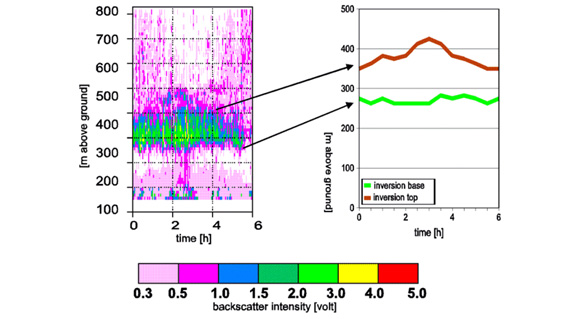
Sodar measurements
What is Active and Passive Sonar or SODAR Technology?
Active sonar gives the exact bearing to a target, and sometimes the range. Active sonar works the same way as radar: a signal is emitted. The sound wave then travels in many directions from the emitting object. When it hits an object, the sound wave is then reflected in many other directions. Some of the energy will travel back to the emitting source. The echo will enable the sonar system or technician to calculate, with many factors such as the frequency, the energy of the received signal, the depth, the water temperature, the position of the reflecting object, etc. Active sonar is used when the platform commander determines that it is more important to determine the position of a possible threat submarine than it is to conceal his own position. With surface ships it might be assumed that the threat is already tracking the ship with satellite data. Any vessel around the emitting sonar will detect the emission. Having heard the signal, it is easy to identify the sonar equipment used (usually with its frequency) and its position (with the sound wave's energy). Active sonar is similar to radar in that, while it allows detection of targets at a certain range, it also enables the emitter to be detected at a far greater range, which is undesirable.
Since active sonar reveals the presence and position of the operator, and does not allow exact classification of targets, it is used by fast (planes, helicopters) and by noisy platforms (most surface ships) but rarely by submarines. When active sonar is used by surface ships or submarines, it is typically activated very briefly at intermittent periods to minimize the risk of detection. Consequently active sonar is normally considered a backup to passive sonar. In aircraft, active sonar is used in the form of disposable sonobuoys that are dropped in the aircraft's patrol area or in the vicinity of possible enemy sonar contacts.
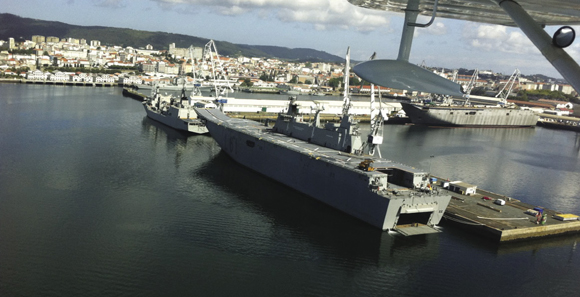
Passive sonar has several advantages. Most importantly, it is silent. If the target radiated noise level is high enough, it can have a greater range than active sonar, and allows the target to be identified. Since any motorized object makes some noise, it may in principle be detected, depending on the level of noise emitted and the ambient noise level in the area, as well as the technology used. To simplify, passive sonar "sees" around the ship using it. On a submarine, nose-mounted passive sonar detects in directions of about 270°, centered on the ship's alignment, the hull-mounted array of about 160° on each side, and the towed array of a full 360°.
The invisible areas are due to the ship's own interference. Once a signal is detected in a certain direction it is possible to zoom in and analyze the signal received (narrowband analysis). This is generally done using a Fourier transform to show the different frequencies making up the sound. Since every engine makes a specific sound, it is straightforward to identify the object. Databases of unique engine sounds are part of what is known as acoustic intelligence or ACINT.
Another use of passive sonar is to determine the target's trajectory. This process is called Target Motion Analysis (TMA), and the resultant "solution" is the target's range, course, and speed. TMA is done by marking from which direction the sound comes at different times, and comparing the motion with that of the operator's own ship. Changes in relative motion are analyzed using standard geometrical techniques along with some assumptions about limiting cases.
Passive sonar is stealthy and very useful. However, it requires high-tech electronic components and is costly. It is generally deployed on expensive ships in the form of arrays to enhance detection. Surface ships use it to good effect; it is even better used by submarines, and it is also used by airplanes and helicopters, mostly to a "surprise effect", since submarines can hide under thermal layers. If a submarine's commander believes he is alone, he may bring his boat closer to the surface and be easier to detect, or go deeper and faster, and thus make more sound.
Examples of sonar applications in military use are given below. Many of the civil uses given in the following section may also be applicable to naval use.
Technokontrol Sonobuoy Detection-Anti Submarine Technology
What is Technokontrol Sonobuoys Technology?
The Technokontrol Sonobuoy Technology is a small (typically 10-20 centimetres, in diameter and 80 /95 cm long) expendable sonar system that is dropped/ejected/launched from aircraft or ships conducting anti-submarine warfare or underwater acoustic research.
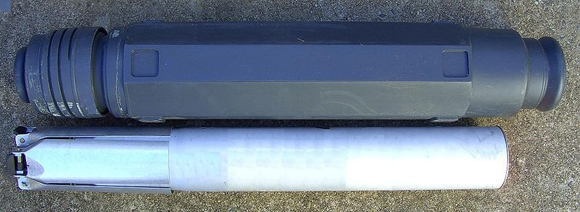
The Eagle Eye IX can deploy the sonobuoys by means of simple ejection from the aircraft or can be laid once landed on the sea surface by manual means. These are deployed in canisters and are deployed upon water impact or with timer technology. An inflatable surface float with a radio transmitter remains on the surface for communication with the aircraft, while one or more hydrophone sensors and stabilizing equipment descend below the surface to a selected depth that is variable, depending on environmental conditions and the search pattern. The buoy relays acoustic information from its hydrophone(s) via UHF/VHF radio to operators on board the aircraft.
Technokontrols Concept of Operation (TK-CONOPs)
Types of Technokontrol Sonobouys?
Active sonobuoys
Emit sound energy (pings) into the water and listen for the returning echo before transmitting—usually range and bearing—information via UHF/VHF radio to a receiving ship or aircraft. The original active sonobuoys pinged continuously after deployment for a predetermined period of time. Later, Command Activated Sonobuoy System (CASS) sonobuoys allowed the aircraft to trigger pings (or buoy scuttling) via a radio link. This evolved into DICASS (Directional CASS) in which the return echo contained bearing as well as range data. Sonobuoys are classified into three categories: active, passive and special purpose.
Passive sonobuoys
Emit nothing into the water, but rather listen, waiting for sound waves (for instance, power plant, propeller or door-closing and other noises) from ships or submarines, or other acoustic signals of interest, to reach the hydrophone. The sound is then transmitted via UHF/VHF radio to a receiving ship or aircraft.
Special purpose sonobuoys
Relay various types of oceanographic data to a ship, aircraft, or satellite. There are three types of special-purpose sonobuoys in use today. These sonobuoys are not designed for use in submarine detection or localization.
- a)-BT—Thebathythermobuoy(BT) Relay bathythermographic or salinity readings, or both, at various depths.
- b)-SAR—The search and rescue (SAR) buoy is designed to operate as a floating RF beacon. As such, it is used to assist in marking the location of an aircraft crash site, a sunken ship, or survivors at sea.
- c)-ATAC/DLC—Air transportable communication (ATAC) and down-link communication (DLC) buoys, such as the UQC, or "gertrude", are intended for use as a means of communication between an aircraft and a submarine, or between a ship and a submarine. This information is analysed by computers, acoustic operators and TACCOs to interpret the sonobuoy information.
Active and/or passive sonobuoys may be laid in large fields or barriers for initial detection. Active buoys may then be used for precise location. Passive buoys may also be deployed on the surface in patterns to allow relatively precise location by triangulation. Multiple aircraft or ships monitor the pattern either passively listening or actively transmitting to drive the submarine into the sonar net. Sometimes the pattern takes the shape of a grid or other array formation and complex beam forming signal processing is used to transcend the capabilities of single, or limited numbers of, hydrophones.
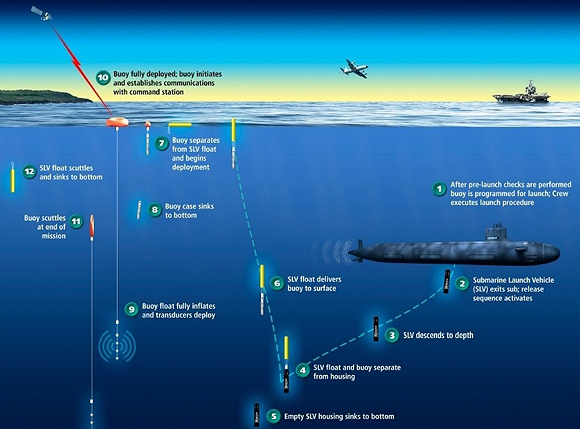
The "Eagle Eye IX-DEEP SEA RESEARCH/ANTI-SUBMARINE AMPHIBIOUSAIRCRAFT" and is equipped with several different aviation engine models options from a 80bhp to a maximum 200bhp depending on the clients requirements, aerial conditions, range, speed, etc. These engines are always top of the range and quality manufactured engines from "Honda" engines to "Rotax" engines models, however, we are at present only using fuel injection engines to reduce fuel consumption, contamination and especially extending refueling times and reducing maintenance costs.
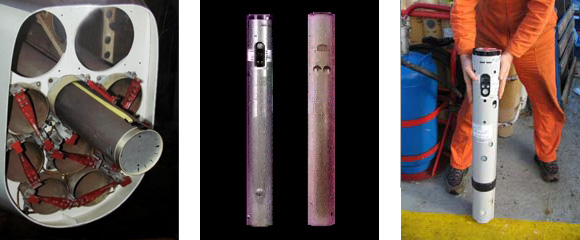
The "Eagle Eye IX" is an excellent amphibious aeroplane with a great aerodynamic design allowing high aerial and water maneuverability, an extreme low stall speed of 70kph and perfect take-off and landing performances in under 300 metres, normally not needing more than 150 metres once experienced with the piloting of the aircraft.
The Eagle Eye IX is an aircraft with excellent out-the-cockpit view, wide, comfortable and extremely easy to fly, even with automatic pilot systems, GPS, recording technology and with an extreme list of options, safety features and benefits for the pilot and for the operator.
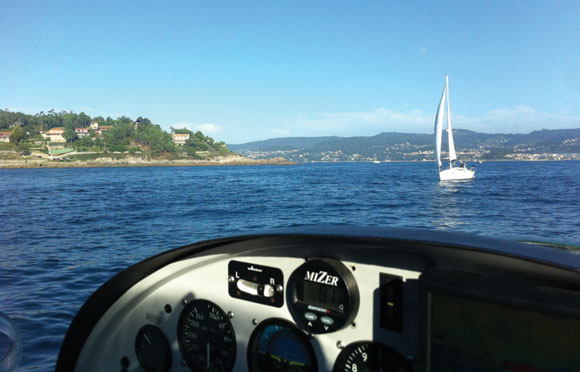
The "Eagle Eye IX-Deep Sea Research/Anti-Submarine version amphibious aircraft” is extremely competitive and has no real operational competitor regarding quality, safety, speed, ranges, stall speed & security.
- Landing options from simple pathways, grass fields under 300 metres to lakes, rivers, streams, marshes, deserts and even on snow.
- Possibility to use the aircraft for other operational options as “interchanging” the loading space and to replace with a co-pilot seat thus being able to use the aircraft as a two (2) seater version for other activities operational activities.
- Ship docking/sea platform loading and un-loading via crane systems for extreme long range operations for sea operations.
- Ship mobile hanger-container transport /maintenance system to transport the Eagle Eye IX at sea. Mobile hanger-container has its own anti-explosion, anti-slosh, safety refueling technology inside a fully equipped maintenance and repair hanger protected with special heat/fire and even bullet proof Level III protection panels for the maximum safety and security of this aeronautical logistical, military, security asset.
- Emergency evacuations programs for extreme located sea drilling operations or military sea bases especially in the new five (5) seater versions.
- Pre-warning operations by using the Eagle Eye IX low flight aerial surveillance operations from sea bases to land or rivers or islands which will be totally secret as no flight times or visual control will or can be initiated from offshore bases thus rendering “leaked information worthless” and thus reaching unexpected locations at any time without local knowledge of flight paths or times.
- Due to the increase of drug trafficking from South America towards Western African nations and indirectly reaching European nations the Eagle Eye IX will be able to control and to search drug trafficking new technologies transport methods especially against the use of “Drug Submarines-Narco Subs” which with massive illegal, continuous, technological and unlimited financial investments will sooner or later also reach these parts of the world as they are already doing from Central America, Colombia, Venezuela to Mexico and the USA.
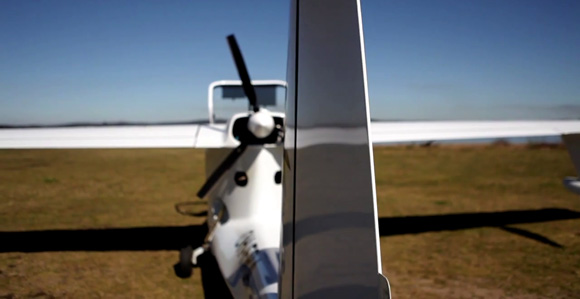
Technologies & technical features
- 1 Seater amphibious plane (2 Seater option if Sonobuoys has the “interchangeable option”)
- No private, commercial or military aviation qualifications required.
- Extremely easy to learn to fly in less than 30 hours
- Extreme low radar detection technology
- Maintenance programme simple and extremely economic
- Fuel used normal gasoline92- 95 octane
- Fuel consumption for 10 to 15 litres per flying hour
- Range up to 1,500 km per flight up to 3,500km with extra range fuel tanks
- Max speed upto 260kmph
- Stall speed min: 70 kmph
- Ceiling height of up to 3,000 metres
- Automatic flight pilot for one pilot operations and doing other aerial operational activities
- Wide and comfortable one seater cabin
- Take off sea / river / land runway max 300 metres (normally 150metres)
- Bullet proof level iii undercarriage and under wings protection
- Technokontrol anti-explosion fuel tanks
- Technokontrol anti-slosh fuel tanks
- Technokontrol safety fuel valves
- Aeroplane emergency parachute system.
- Engines power from 80bhp to 200hp.
- Protective rectractable undercarriage
- Bullet proof Level III undercarriage Protection
- Sonobouy loading bay for external or internal loading
- Sonobouy, carrying, loading and launching capacity by air or manually.
- Night vision/thermal heat cameras technology
- Long distance up to 6,000 metres cameras systems and recording units
- Camera recognition technology to recognize armament on persons or transport via cameras images.
EASA Certification

Certified manufacturing quality and safety standards by the European Aviation Safety Agency (EASA)
Easy landing & take-off
Take off sea/river/land runway max 300 metres (normally 150 metres).

Easy to fly
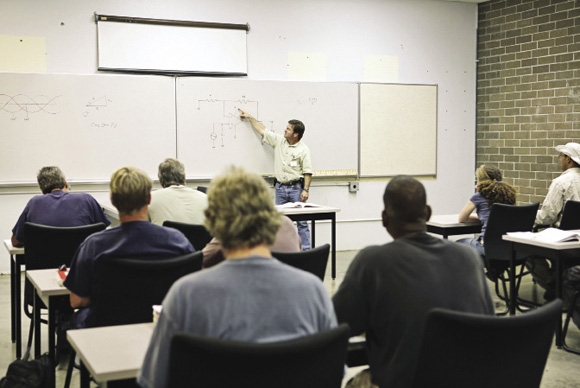
The Eagle Eye IX model is easy to learn to fly in less than 20 hours.
No private, commercial or military aviation qualifications required.
All pilots will be trained in our european installations to become qualified instructors.
Low radar detection
Extreme low radar detection. Due to the hidroplanes manufacturing materials and the possibility to fly continously for many hours at minimum ceiling height.
Most european military and civilian radars cannot detect the Eagle Eye IX in flight.
Engines
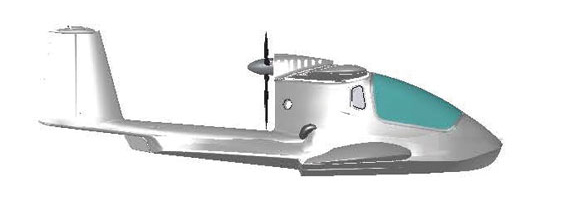
Eagle Eye IX engine powered from 80bhp to 200 bhp fuel injection.
Possibility to adapt to all international engine suppliers and spares.
Technokontrol safety technologies
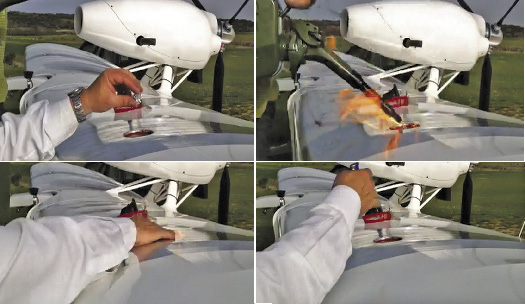
Anti-explosive fuel tank
Anti-Slosh fuel tank
Safety fuel valves
Airplane emergency parachute system
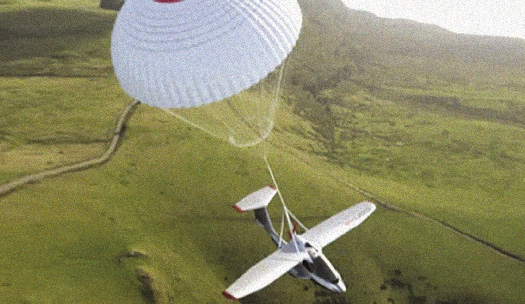
Hi-technology features with easy to use navigation systems, GPS, etc
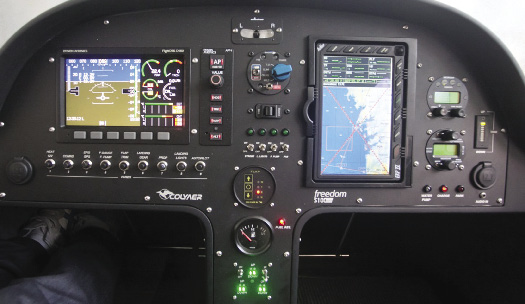
Easy Refueling / Parking
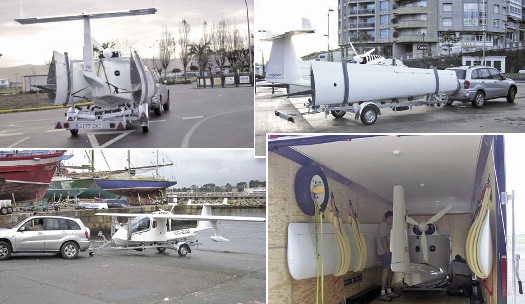
Port/Dock/Land/River easy refuelling-parking
Wide and comfortable cabins
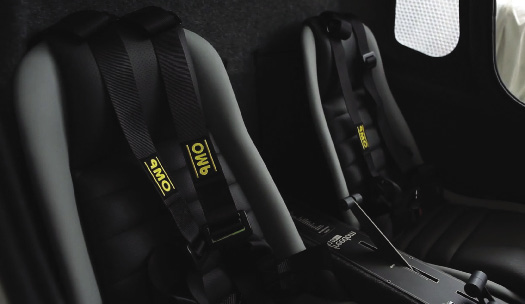
The Eagle Eye IX versions have wide & comfortable cabins for long working hours.
Quick and easy Transport / Storage
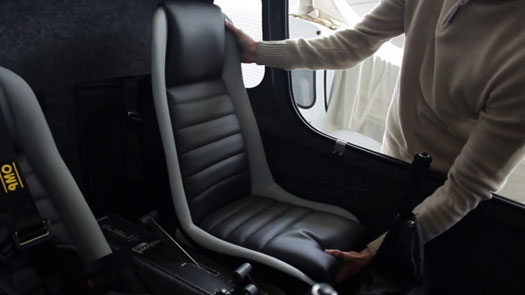
Automatic pilot
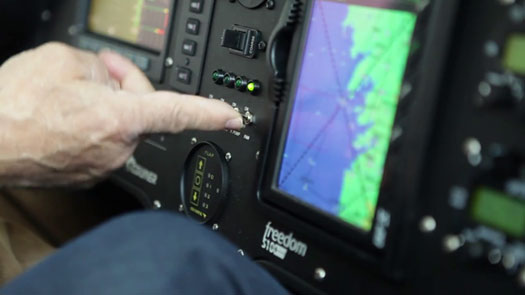
Automatic pilot flight system. Due to long surveillance flights this allows the pilots to have a less stressful flight and to operate sonobuoys launching systems with only one pilot.
Technical specifications for the Eagle Eye IX-Deep Sea/anti-Submarine
- Wingspan The Eagle Eye IX: 10-12,4m depending on final use.
- Loading weight from 100-150 litres.(extra tank capacity possible as an option)
- Length:5,50-6,25 depending on final use
- Wing surface The Eagle Eye IX.10-14metres depending on final use.
- Empty weight:325-450kg depending on final use
- Take off weight:550-750kg depending on final use.
- Load factor +5G/-3G Performances
- Stall speed: 70kph
- Cruise speed Eagle Eye IX:190-200Kmph
- VNE Eagle Eye IX: 200-260Kmph
- Climb rate Eagle Eye IX:5-6m/s
- Max. L/D Eagle Eye IX:20:01
- Min. sink rate Eagle Eye IX:1,5m/s
- Take off/landing run Eagle Eye IX:150m-300metres
- Range 1200-1500km( 3,500 with extra long range fuel tanks with one pilot)
- Thermal/Night versión cameras
- Long distance 6.000 metres cameras with “armament recognition technology”
The Eagle Eye IX is our new amphibious aeroplane from Technokontrol to be used as an efficient “aerial work horse” with the highest safety standards to make possible flight for everyone type of pilot, from the most experienced to the recent client/pilot whom has the need to use this “aerial defence/attack/research tool” to increase protection of their corporate or national assets, fishing rights and borders. It has one seat side by side assembly with a main sonobuoy loading sector inside a large cockpit ( 1.10 m width ) and with exceptional visibility. The canopy includes an elastic gasket that makes the cockpit protected from rain and waves. There is a large place for baggage in the back of the seats. The engine is integrated into the fuselage and permits 80 bhp to 200 bhp. However, depending on its final use or needs to can be increased up to 150 bhp.
The “Eagle Eye IX-” has been carefully designed to take off and land in extreme short distances which normally are from as little as 150 metres to the 300 metres. The generous V-shaped hull allows the using of the aircraft with waves up to 30 cm high, as well the high location of the wings avoids the crashing of the waves on its during the takeoff and the landing. The T-shaped Tail is also far enough from the ground to avoid the contact with waves. The side floats were designed for the lowest aerodynamic resistance and the highest features of floatability. The design and size of the wing makes this amphibious aeroplane to have a great glide co-efficiency of 20:1 allowing thermal flights possible with the engine switched off. The flaps operate from – 5º on cruising flights to + 50º for short landings.
The Eagle Eye IX is totally manufactured with composite materials (FV, Cb, Aramida, Epoxi, …) which are completely corrosion free. Mechanical parts and screws are made of stainless steel A4 ( AISI 316 ) and anodized aluminium. This guarantees low cost of maintenance. The range is of 1200km to 1.500 km. and uses the normal and easy to find 92- 95 octane gasoline.
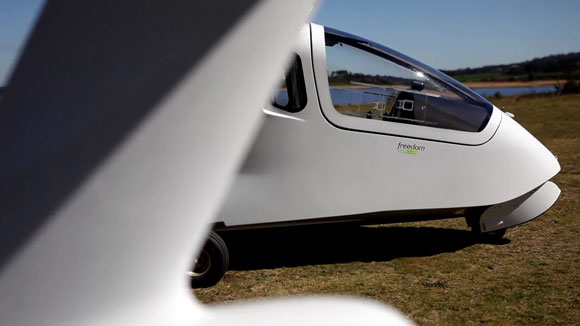
Depending on the client’s needs we can "custom make and design" each model for their exact requirements thus being each their own custom made “Research/Coast Guard/Navy amphibious aeroplane” with different final designs depending if it will be used for example for the use in long range fishing activities, defence, environmental, anti-piracy, etc.
Technokontrol has also made the Eagle Eye IX as easy to use as possible reducing training to less than 30 hours, 10 hours for land operations/10 hours for sea operations/10 hours for river operations. Depending on the final use and the sophistication of the technology incorporated into each model of plane these training courses will be longer and more designed towards the complete use and knowledge of these technological systems.
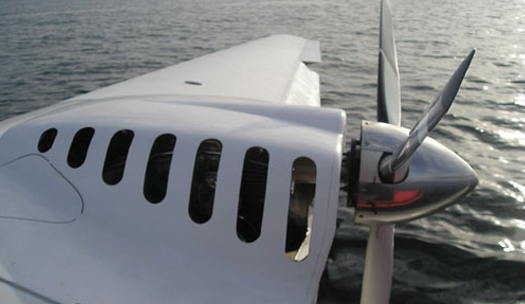
The use of commercial petrol engines allows the final operator to have access to easy and efficient repairs and maintenance programs and these engines run on normal gasoline which make the cost and rate of return of the initial investment extremely beneficial and cost effective.
Sea transport of the planes are done in protected sea freight containers and can be delivered anywhere in the world. Re-assembly and flight preparation of an Eagle Eye IX can be done in less than 2 hours from container to flight. These containers-hangers can be loaded onto ships or ship under decking and with a simple crane the Eagle Eye IX can be deployed at sea, extreme locations and depending on weather conditions can even be refueled in floating position due to having anti-explosion, anti-slosh fuel tanks and maximum safety refueling technology. Thus saving time and not needing to load back onto the ship for refueling which must be done if weather conditions are too bad for “off ship refueling operations”.
All of our Eagle Eye IX have many options as for example long distance vision cameras for” environmental fighting operations” or “asset protection” usage having also unique safety & security benefits and features as anti-explosion fuel tanks, bullet proof undercarriages, anti-slosh fuel tanks, emergency plane parachute system, even options as night vision and thermal heat cameras just as a small example of what we can custom manufacture for each of our clients needs at a fraction of normal private aircraft, specialist aircraft, private jets, helicopters and even less with amphibious usage as this unit which allow any operator to use the aircraft all year round, for and with many different options and thus increasing their return of investment even quicker than just as a sole once type of operational usage.
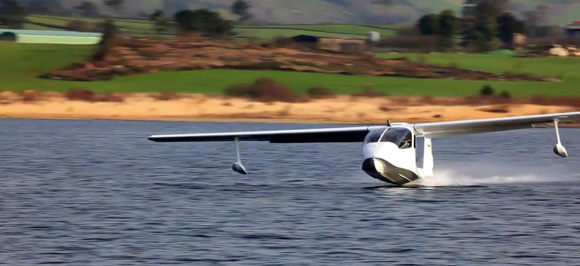
General characteristics of the Eagle Eye IX-Deep Sea/Anti-Submarine
- Side-by-side 1-seater/Tank Amphibian/hydroplane aircraft with double-stick control system.
- The T-shape tail and high wing ensure that the control surfaces are far enough from the water to avoid interference from splashing.
- Spacious cabin with great visibility makes this aircraft ideal for coast-guarding activity, aerial photography, search & rescue, policing etc.
- The programmable Flap Control (5 points) means the ability to operate with angles from -5º (cruise) to +50º (airbrake).
- SAFETY: High glide rate (20:1) and low stall speed (70 Km/h).
- INDEPENDANCE: The real independence of deciding your own future and technological programs, including incorporating extra features and aerial or operational benefits.
- CONFIDENCE: The Eagle Eye IX you will be able to experience the real pleasures of flying as you will feel confident operating over both water and land.
- CONVENIENCE: The aircraft can be assembled and disassembled in 45-120 minutes by 2 people and transported on a trailer-hanger container thus making it possible to use it anywhere.
Construction materials
- The Eagle Eye IX is built entirely from composite materials (carbon, kevlar, glass...) except for a few metallic components made in stainless steel AISI 316 and aluminium 6082 T6. These materials offer long-life, low maintenance and safety even when operating in salt water.
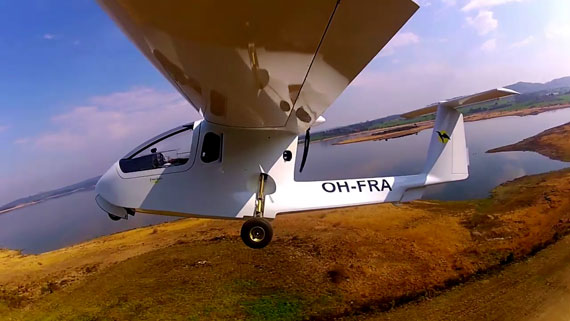
Fuselage
- Made from Carbon and Kevlar, with a reinforced hull, the fuselage absorbs the impact of landing on water and offers greater safety. Carbon and Kevlar provide resistance and rigidity, indispensable for operating in water, and also guarantee a long life for the aircraft.
- The hull of the Eagle Eye IX is divided into 3 independent compartments, with access registers, which guarantee the buoyancy of the aircraft in case of any perforation caused during impact on the water.
- Anti explosion fuel tanks.
- Anti slosh fuel tanks.
- Emergency aeroplane parachute system
Water ruder
- Operates in synchronization with the regular steering without having to be retracted as its position does not interfere with landing and take-off procedures nor decrease the aerodynamics. Its size and position give the Freedom maximum maneuverability in the water.
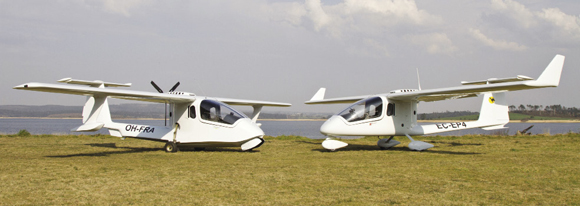
Floats
- Made from Carbon and Kevlar which means they are very resistant to impact.
- Aerodynamic design which minimizes both resistance in the air and in water while securing maximum sailing and buoyancy.
- The distance between the floats and the water during take-off and landing is 45cm - there is no contact with the water ensuring maximum safety during these maneuvers
Engine specifications
- The engine is integrated into the fuselage, improving the aesthetics of the aircraft and optimizing aerodynamic performance and stability.
- Normal engine (80 bhp Fuel injection)
- Special engine (100-120 bhp Fuel injection)
- Extreme power engines (200 bhp Fuel injection)
- The reversible propeller facilitates maneuvers in and out of docking area.
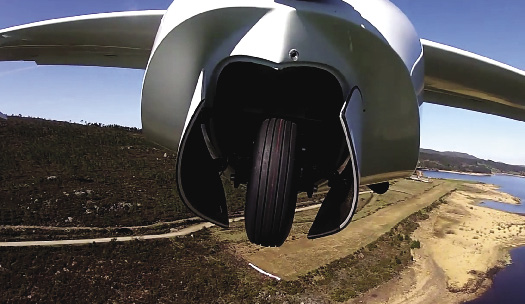
Landing gear
- An electric system operated by stainless steel actuators, which is completely separate and independent for each wheel. The mechanism has detectors that indicate the opening and closing position of the wheels on the control panel - guaranteeing complete safety during landing. Additionally the main landing gear has a locking system which guarantees that the wheels are closed during landing and take-off on water.
- When not in use, the landing gear folds into the fuselage where it can be stored without interfering with the aerodynamics of the aircraft.
- The design of the nose wheel allows it to be controlled by the steering pedals, which remain unlocked when the landing gear is closed and operate when the landing gear is open to steer on land.
- Hydraulic breaking system which operates simultaneously in both wheels of the landing gear. Made from high quality stainless steel AISI 316 and anodic aluminium 6082 T6, which ensure strong resistance against salt corrosion.
- The landing gear storage compartment is equipped with a series of tubes which allow any water collected during take-off to be dispersed quickly.
Take-off and landing
- The Eagle Eye IX requires 150 metres to 300 metres depending on land/water conditions
- Take-off on water is stable from the first moments due to the generous control surfaces. The V-shaped hull allows the aircraft to operate in open waters lessening the impact on the hull.
Range
- The Eagle Eye IX has three fuel tanks in the fuselage with a capacity of 75 litres, giving it a total range of 900km- 1.500 Km.(Depending on conditions and extra fuel pods con be attached)
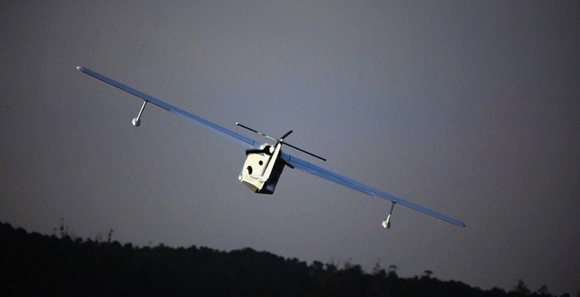
Technokontrol Certificates & Associations
Technokontrol Manufactures, Designs & Researches our safety products in the European Union at the highest possible International Accident,Health & Safety standards.
TechnoKontrol is a member of the NFPA
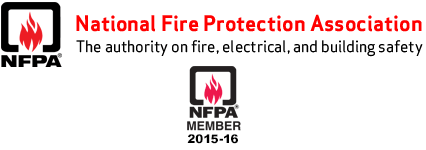
TechnoKontrol Products are ATEX Compliant
(European Antiexplosive Safety Directives)

Technokontrol's Products & Services are insured by

Certificates



































TechnoKontrol Aviation Videos
- Eagle Eye II Amphibious Low Level Ground Flight & Water Base Landings
- Jet Engines Video
- TK Eagle Eye III & IV
- TK Aviation Civil Use
- TK Aviation Law Enforcement
- Refueling on fire
- Liquids balance
- Technical video
- Aircraft Fire Fuel Tank Test - Prueba de ignición en tanque de combustible de un aeroplano
- TK Outdoor Tests Presentation - Fire Services / KNPC Kuwait
- Security Test (SPA) - Prueba de Seguridad
- Heat Conductivity of TK Alloys - Conductividad térmica de malla TK
- Types of TK Alloy Formats - Formatos de presentación de malla TK
Aviation & Airports Protection
Products
What is B.L.E.V.E. explosion?
TechnoKontrol Wikipedia

TechnoKontrol: 1st in Spain for own Technology patents 2013 & 2014

- Ministerio de Industria Turismo y Comercio-OEPM
Technokontrol, the number 1 corporation in Spain filing for its own technology patents, trademarks and utility patents (SPA) - OEPM 2013 The year in numbers (SPA)
TechnoKontrol has been fully verified and certified by Bureau Veritas
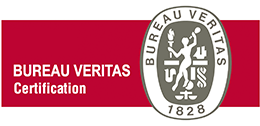
Certificates
- ISO 9001 - ES108784-1
- ISO 14001 - ES108782-1
- ISO 45001 - ES108783-1
- ISO 4126
- ISO 28000
- ISO 37000
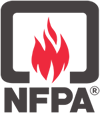
NFPA-National Fire Protection Association
NFPA-Asociación Nacional de Protección contra el fuego
TechnoKontrol is a member of the NFPA
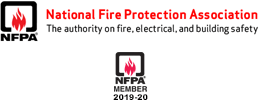
NFPA 69: Standard on Explosion Prevention Systems, 2016 Edition
Prevent deflagration explosions due to combustible dust particles, gases or vapors with NFPA 69. Combustible dust, gases and vapors produced in industrial settings can pose a significant safety hazard.NFPA 69: Standard on Explosion Prevention Systems offers definitive guidance on explosion protection and prevention systems.
ATEX - European Antiexplosive Safety Directives

- ATEX Guide: Protection in explosive atmospheres
- ATEX-EU/HAZLOZ-USA/NFPA-USA/DSEAR-UK/Explosion Directives TechnoKontrol Additional Anti-Explosion Data
- ATEX Directive in EU Directives
Dangerous Substances and Explosive Atmospheres Regulations - United Kingdom/ATEX

United Nations Economic Commission for Europe - UNECE - TechnoKontrol

- TechnoKontrol information for the UNECE BLEVE working group
Proposal transmitted by the governments of Spain and France
The European Parliament and The Council

Technokontrol's Products & Services are insured by

Dossiers TK Group of Companies
TK-Global Engineering - Where efficiency and reliability become a reality



BP World Report
Static Electricity Dangers and Protection
- Static Electric Discharge Hazard On Bulk Oil Tank Vessels
- Static Electricity - ISGINTT
- Dangers of static electricity and protection in aviation
- Static Electricity - IAPA
- U.S. Chemical Safety and Hazard Investigation Board
US Department of Transport
USA Chemical Safety Board
An independent federal agency investigating chemical accidents to protect workers, the public, and the environment.
About the CSB
CSB Safety Videos
- Chevron Richmond Refinery Explosion
- Deadly Contact
- West, Texas Real Live Blast Damage Video
- Hot Work - Dupont Explosion
- Static Sparks Explosion in Kansas
- Danger of Flammable Gas Accumulation
Articles
- Energy Sector Vulnerabilities: Petroleum (Spanish)
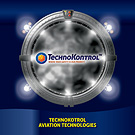
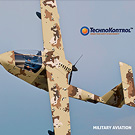
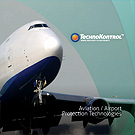
 Safety Products System
Safety Products System Eco-Energy Power Plants
Eco-Energy Power Plants TK Aviation
TK Aviation Environmental Industries
Environmental Industries Mining
Mining Petroleum Industry
Petroleum Industry Industrial Projects
Industrial Projects Maritime Industry
Maritime Industry Military Vehicles
Military Vehicles Transportation & Auto
Transportation & Auto Construction Industry
Construction Industry Global Food Industry
Global Food Industry Electronic Safety Systems
Electronic Safety Systems Housing Projects
Housing Projects